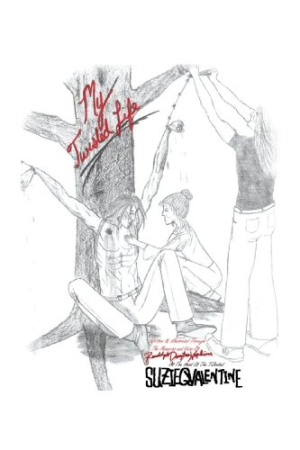My Twisted Life
As the old adage goes, what doesn’t kill you makes you stronger. Randy Hopkins, the narrator of Suzie Q. Valentine’s harrowing debut novel, My Twisted Life, gains fortitude with every act of abuse he endures from his family and every shock his body suffers as he pumps it full of drugs. Randy survives multiple gunshot wounds, having his foot shoved into a garbage disposal, being tied to a tree for two days, and putting himself into a coma. Through a combination of luck and extensive knowledge gleaned from medical textbooks, Randy learns to sew his wounds from the age of five. Able to survive the horrendous abuse of his mother and two stepfathers, Randy finds solace in drugs, as well as in the comfort of a gang of abuse victims, another junkie, his beloved Harley-Davidson, the clean-cut Jentry family, with whom he lives for a while, and his girlfriend, Bobby, a Native American who is adopted by the Jentrys when her parents die. His support network, however, cannot save him from his destructive path.
This narrative is only recommended for those who can stomach graphic descriptions and extreme profanity. Randy describes his skin bubbling when his mom shoves him against a hot stove, the sound of a garbage disposal crushing his foot, and a gaping infected hole in his intestines after he gets shot. As for foul language, the protagonist curses, as do his friends and abusers. Only the Jentry family and Bobby have clean mouths, and they display a tolerance for Randy’s foul-mouthed, partying ways that lacks believability. Although the Jentry parents don’t want their young children exposed to Randy’s bad habits, they are surprisingly laidback in front of the kids. Despite his flaws, readers root for the protagonist because of his ability to survive, not to mention his incredible skill at repairing motorcycles. This evidence of humanity enables the audience to empathize with Randy and see him as a victim of abuse struggling to survive.
The Jentrys are rounded characters, despite their tough-to-believe acceptance of the troubled protagonist. Bobby, however, is a stereotype: A good person trying to save her troubled boyfriend, she is meant to have the characteristics of a mystical Native-American maiden. Randy lingers on descriptions of her exotic beauty to the point where she is nothing more than her appearance. While it is common for good girls to go for bad boys, it’s ridiculous that straight-arrow Bobby, who never tries drugs but tolerates Randy’s habit, falls for a scarred, smoking, drinking, drug-taking dropout who cusses every other word. Even more unbelievable, they fall in love within a few hours of meeting. And Randy and the supposedly virtuous Bobby frequently engage in animalistic sex. While the author excels in making her antihero heroic, the book’s repetitive graphic physical torture, profanity, and sex scenes make the narrative bearable only for audiences with iron stomachs.
Reviewed by
Jill Allen
Disclosure: This article is not an endorsement, but a review. The publisher of this book provided free copies of the book and paid a small fee to have their book reviewed by a professional reviewer. Foreword Reviews and Clarion Reviews make no guarantee that the publisher will receive a positive review. Foreword Magazine, Inc. is disclosing this in accordance with the Federal Trade Commission’s 16 CFR, Part 255.

